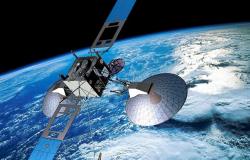On January 6, 2024, the SHERLOC (Scanning Habitable Environments with Raman & Luminescent for Organics and Chemicals) instrument aboard NASA’s Perseverance rover on Mars began to malfunction. One of the two covers that prevent dust from accumulating on the optics was partially open, and interfered with scientific data collection operationsThe Agency had reported it at the beginning of February.
Now, after 6 months of trying to resolve the situation, NASA has announced that on June 17th SHERLOC is back to collecting data correctly. It has analyzed a rock with its spectrometer and camera for the first time since January, so all its components appear to be working.
This result confirms that SHERLOC, a very important part of Perseverance’s suite of seven tools, is officially back in operation. Right now that the rover is studying a very interesting region, the “Margin Unit”, along the inside of the edge of the Jezero crater, now at the end of its fourth scientific campaign.
The origin of the problem
The SHERLOC tool is mounted on Perseverance’s robotic arm. It uses two cameras and a laser spectrometer to look for organic compounds and minerals in rocks that have been weathered in aqueous environments, and which could reveal signs of past microbial life.
On January 6, a movable lens cover designed to protect the instrument’s spectrometer optics and one of its cameras from dust became frozen in a position that prevented SHERLOC from collecting data. Below, an animation obtained with images from one of the navigation cameras on board Perseverance, showing the incorrect position of a SHERLOC cover. Credits: NASA/JPL-Caltech
The SHERLOC team’s analysis highlighted the malfunction of a small engine, responsible for moving the protective lens cover and adjusting the focus of the spectrometer and the Autofocus and Context Imager (ACI) camera. Testing potential solutions on a model of the SHERLOC instrument here on Earth at JPL, the team then began a long and meticulous evaluation process to see if (and how) the lens cover could be moved into the open position.
Months of attempts, for a final success
Among many attempts, the team tried warming up the lens cap’s small motor, commanding the rover’s robotic arm to rotate the SHERLOC instrument under different orientations with Mastcam-Z supporting images. So you can rock the mechanism back and forth, to loosen any debris that might have jammed the lens cap. They also fired the rover’s hammer drill to try to free it.
On March 3, images returned by Perseverance showed that the ACI lens cap had opened more than 180 degrees, clearing the imager’s field of view and allowing the ACI to be positioned close to its target. However, a way to focus the instrument on a target was still needed: without focusing, SHERLOC images would be blurry and the spectral signal would be weak.
The team then relied on the rover’s robotic arm to make small adjustments to the distance between SHERLOC and its target to achieve the best image resolution. SHERLOC was instructed to take pictures of its calibration target so the team could verify the effectiveness of this approach.
Confirmation of the precise positioning of the ACI on a rocky Martian target came on May 20. On June 17, confirmation arrived that the spectrometer was also functioning. In this way, SHERLOC can return to 100% operational.
Art Thompson, Perseverance project manager at JPL, said:
The team never gave up. With SHERLOC back online, we are continuing our explorations and sample collection with a full suite of scientific instruments.
© 2024 Astrospace.it All rights reserved. This article may be reproduced or distributed in full only with the written authorization of Astrospace.it or partially with the obligation to cite the source.






